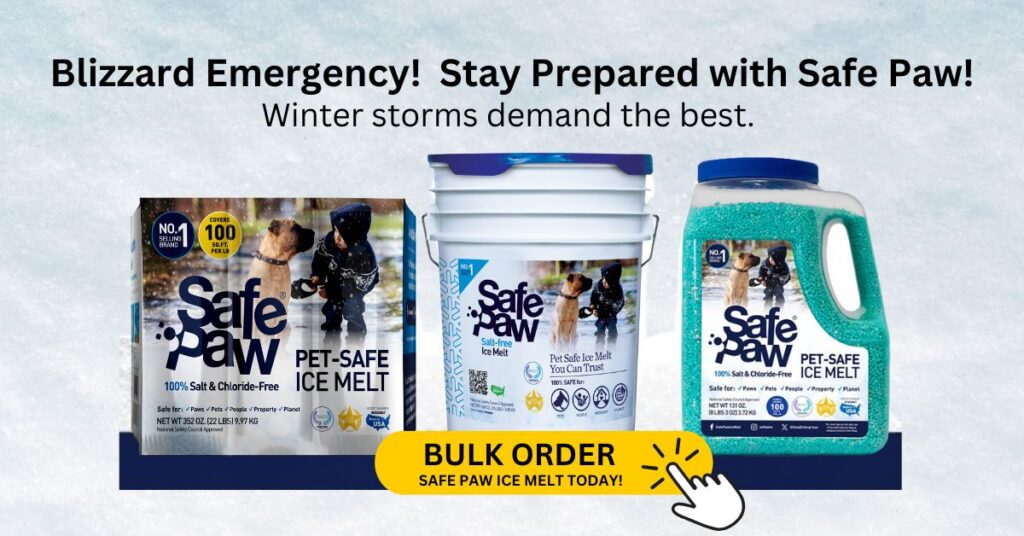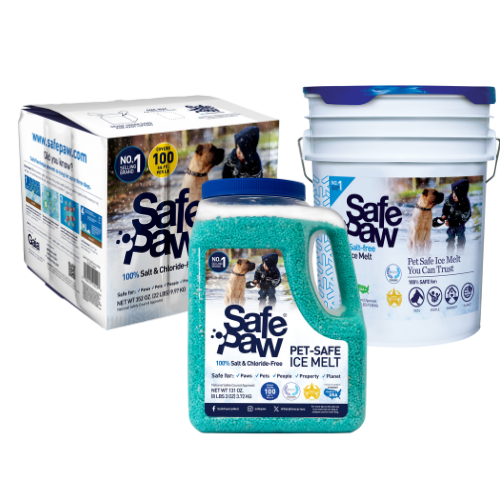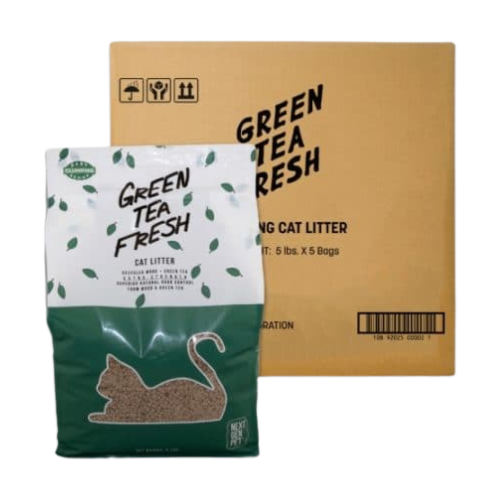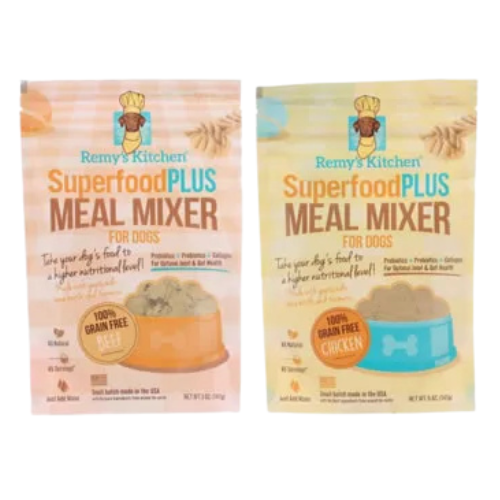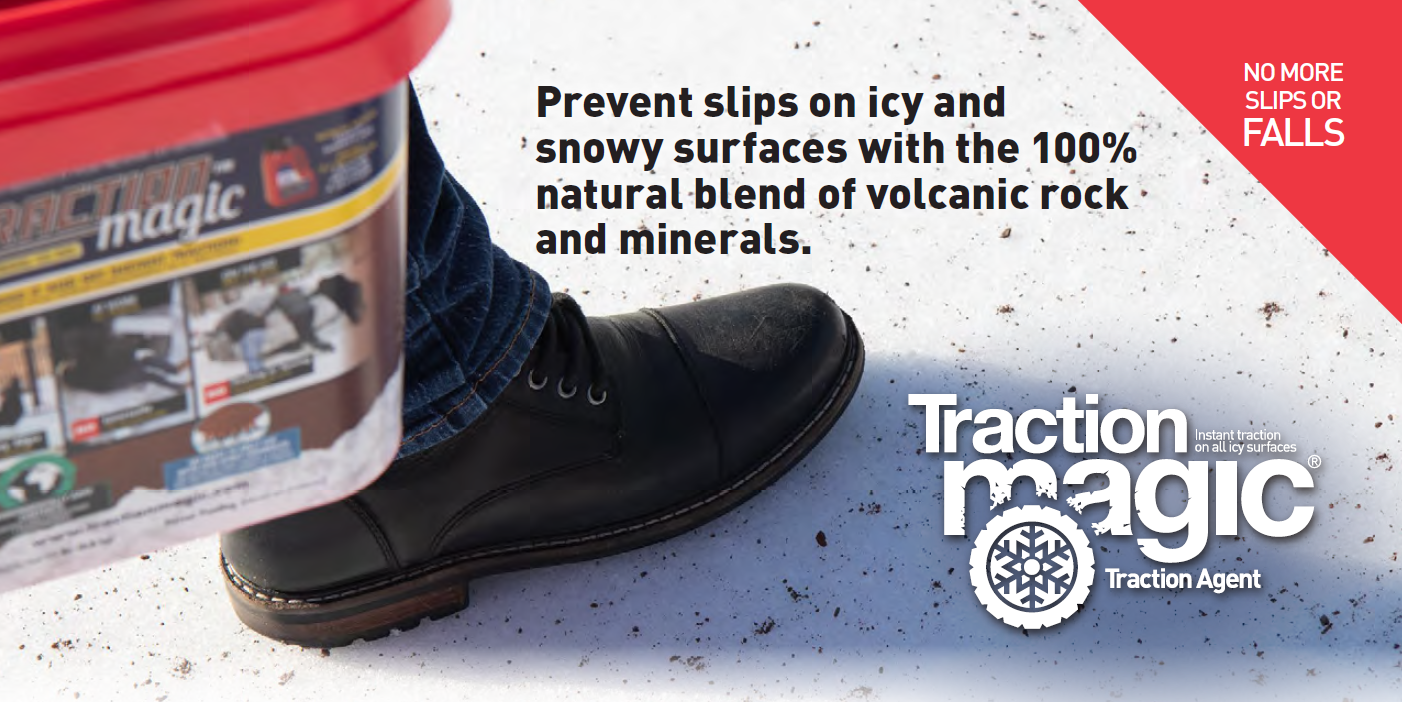Safest Ice Melt For Brick Pavers
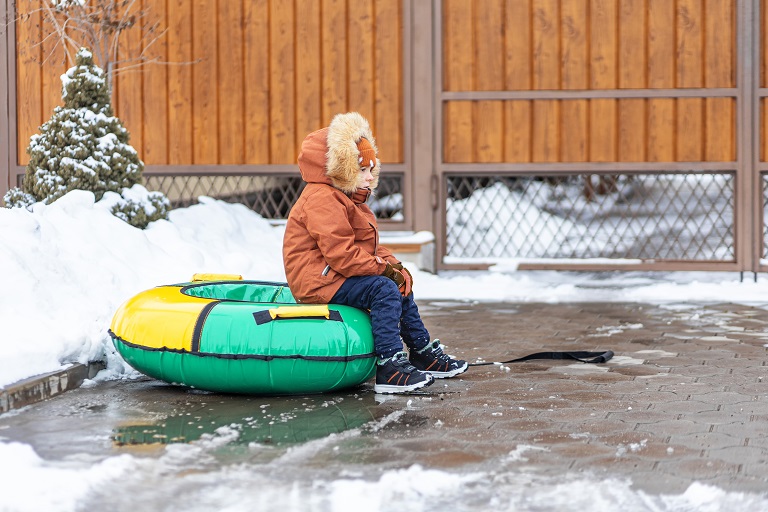
Outdoor walkways are beautiful. Not only do they look elegant, but they also don’t make a hole in your pocket. However, they do require some care and in the snowy weather. Shoveling is one of the most popular ways of getting rid of the snow. But is it safe? And what about those chemical-based ice melt products? Are those ice melt products safe for brick pavers?
As winter descends and icy conditions prevail, safeguarding your outdoor spaces becomes paramount, particularly when it comes to pavers. Choosing the best ice melt for pavers is not only about safety but also about preserving the integrity of your pavers. In this comprehensive guide, we will navigate the realm of paver-safe ice melt. We’ll address various concerns, such as the suitability of magnesium chloride, the impact of rock salt, and the effectiveness of Safe Paw. By the end, you’ll have a clear understanding of the best ice melt for pavers.
You may already know that using salt is not safe to use on brick and concrete. You may have also heard people using fertilizer for ice melt also. Then how do you remove ice without damaging the bricks and affecting their longevity?
Key Takeaways
- Chloride-based deicers penetrate paver joints and accelerate freeze–thaw deterioration.
- Sand provides traction but does not melt ice and can abrade paver surfaces.
- A chloride-free, salt-free, non-corrosive formula protects brick pavers, joints, landscaping, and pets.
- Proper application—pre-treating, minimal dosing, post-melt cleanup—reduces long-term paver damage.
Choosing a formulation rated to –2°F shortens the freeze–thaw exposure window and protects surfaces.
Let us try to understand this from a scientific viewpoint.
Rock Salt And Pavers
Before we talk about the ice melt safe for brick pavers, let’s first learn how snow and pavers interact.
In the liquid form, water molecules (oxygen and hydrogen) move freely. However, once frozen, they bond together in a perfect structure, creating ice. Sodium Chloride breaks these icy molecules or structures or other blends to loosen and melt the ice.
Rock salt when comes in contact with the ice, releases heat resulting in the melting of the ice.
If higher the salt concentration, the lower the freezing point because salty water has a better freezing threshold than regular water.
That may sound good, but here are the problem using rock salt to melt ice on pavers:
- The quick heat reaction and repeated exposure to rock salt cause the joints in between the pavers to contract and expand.
- Every time the ice melts, it seeps in between the joints. And when it refreezes, it expands the concrete bit by bit. Over time, this results in wider gaps in between your pavers.
- Salt is a corrosive material and eventually rusts metal, damages concrete, and causes cracks.
- Overusing the ice melt for pavers can result in damaging the vegetation around the house as well.
However, you can avoid the stress altogether with the proper ice melt safe for brick and concrete pavers.
Winter can be tough on your property, especially when it comes to maintaining brick surfaces like driveways and walkways. Choosing the right ice melt product is essential, not only for safety but also to minimize damage to your masonry. Here’s what you need to know:
Brick-Safe Ice Melt
Brick pavers look elegant and durable, but winter conditions expose them to specific mechanical and chemical stresses. Proper deicing protects walkways and driveways without sacrificing the long-term integrity of pavers, the mortar or jointing sand, surrounding landscaping, or the health of pets and people. This guide explains which products are safe for pavers, why some common choices cause damage, and how to apply safe deicers effectively.
Environmental and Pet Considerations
When it comes to your furry friends and the planet, environmentally friendly ice melt and pet-safe ice melt are essential. Products containing glycol and urea rather than salts can be safer for both pets who may walk on the treated surfaces and the surrounding greenery.
What post-winter care extends paver life?
Maintaining brick surfaces after ice melt use involves thorough cleaning in the spring. Wash down the areas to remove any residual deicing product, which can continue to cause damage long after the ice has melted. Inspect for any loosened mortar or cracked bricks and repair them to prevent further water ingress. This is another reason why you should not choose chloride-based ice melt products.
| Masonry conservation best practices call for prompt spring cleaning and joint maintenance to prevent water ingress over subsequent seasons. |
Is magnesium chloride safe for brick pavers?
Magnesium chloride performs well at lower temperatures but still introduces chloride ions into the system, which attract moisture and weaken joints over repeated applications. For long-term paver preservation, magnesium chloride is not a safe choice.
| Transportation and materials studies show magnesium chloride contributes to moisture retention and chemical changes in cementitious materials and masonry. |
How does salt damage brick pavers?
Salt-based deicers work by lowering the freezing point of water, producing a brine that prevents ice from forming or melts existing ice. That chemical action also creates the pathway for damage: brine penetrates joints and pores, then refreezes and expands, causing internal pressure and surface failure.
When brine repeatedly cycles between liquid and solid inside paver joints, the joints loosen, mortar deteriorates, and individual pavers shift.
Salt residues also attract moisture and carry corrosive ions that affect adjacent concrete or metal fixtures.
| Stone and masonry conservation studies document significant mass loss and surface scaling in porous materials subjected to repeated salt–freeze cycles. |
| Salt residues increase moisture retention and accelerate corrosion of embedded metals and nearby concrete elements. |
| Research shows that chloride salts intensify freeze–thaw deterioration in porous masonry by increasing crystallization pressure inside pores and joints. |
How should ice melt be applied to pavers?
Proper application preserves both safety and paver condition. Follow these steps:
- Pre-treat when appropriate. Apply a light dose before a storm to prevent ice bonding.
- Shovel first. Remove loose snow so the deicer contacts the surface.
- Apply sparingly and evenly. Use a calibrated spreader; more product does not mean better results.
- Clear slush promptly. Sweep or wash away residue once melting has occurred.
- Inspect and repair joints in spring. Replace lost jointing sand or re-point mortar as needed
Post-storm cleanup removes residue that could otherwise leach into the subbase or landscaping.
| Pavement maintenance guidance emphasizes pre-treatment, calibrated application, and post-event cleanup to minimize chemical exposure and abrasion. |
| Environmental guidance highlights that removing deicer residue reduces runoff loading to soils and storm systems. |
What is a paver-safe ice melt?
A paver-safe ice melt is salt-free, chloride-free, and non-corrosive, formulated to break the bond between ice and paver surfaces without introducing corrosive ions into joints or pores. Typical safe formulations use a controlled blend of modified urea and special glycol (or equivalent non-chloride agents) plus traction additives to deliver melt performance and grip without abrasive sand.
These formulations also reduce the frequency of reapplication by preventing rapid refreeze for hours after treatment.
Safe Paw’s feature set aligns with this category: salt-free, chloride-free, non-corrosive, rated to –2°F, pet-safe if accidentally contacted or ingested in small amounts, and formulated with traction agents to avoid sand abrasion.
| Independent product analyses show glycol-based, salt-free deicers provide effective melting and leave minimal corrosive residue compared with chloride salts. |
Are pet-safe deicers always paver-safe?
No—marketing claims overlap, and some “pet-safe” products still contain chlorides or salts in blended formulas. A product that is both pet-safe and paver-safe must be explicitly salt-free and chloride-free, and use benign chemistries that do not burn paws or corrode mortar.
Selecting a formula with non-toxic components that leave minimal residue protects pets and masonry alike.
| Veterinary sources document paw irritation and ingestion risks from chloride residues and emphasize ingredient transparency when selecting deicers. |
Application Tips
Knowing how to apply ice melt on bricks properly is as important as choosing the right type. Always apply a thin, even layer. Excessive use of deicers can lead to runoff and increased damage. After the ice has melted, promptly remove slush and residue to prevent the ice melt from penetrating deeper into the brickwork.
Post-Winter Care
Maintaining brick surfaces after ice melt use involves thorough cleaning in the spring. Wash down the areas to remove any residual deicing product, which can continue to cause damage long after the ice has melted. Inspect for any loosened mortar or cracked bricks and repair them to prevent further water ingress. This is another reason why you should not choose chloride-based ice melt products.
Choosing the Best Products
When it comes to selecting the best ice melt for brick surfaces, it’s crucial to opt for products that are explicitly marketed as safe for masonry. While products like Calcium Magnesium Acetate (CMA) are often touted for being less corrosive than chloride-based deicers, they are not without their drawbacks. CMA can still lead to a slick surface, making it potentially hazardous in terms of slip-and-fall accidents. It’s also significantly more expensive than other deicers, making it a less economical choice for large areas.
Instead, consider a product like Safe Paw, which offers a specialized formula tailored for safety and effectiveness on various surfaces, including brick. Safe Paw is free from salts and chlorides, eliminating the risk of masonry damage due to chemical reactions that can lead to cracking and spalling. This product is also environmentally friendly, ensuring that it won’t harm surrounding vegetation or pose a risk to pets and wildlife. Safe Paw’s unique formulation not only melts ice effectively but also provides a protective layer to prevent re-freezing, which is crucial for maintaining the integrity and beauty of brick driveways and walkways throughout the winter.
Understanding the Risks
Be aware of the ice melt damage to brick. Deicers can exacerbate freeze-thaw cycles that brick structures undergo in winter climates, leading to accelerated deterioration. Rock salt and brick damage is a common issue, where the hygroscopic nature of salt attracts moisture that expands upon freezing, exerting pressure within the brick and causing it to crack or split.
Protection Strategies
To protect brick driveways and other masonry during winter, consider using safer products instead of salt-based products, or opt for newer formulations that combine efficacy with lower chemical concentrations to safeguard both your masonry and the environment.
How does freeze–thaw frequency affect paver longevity?
Frequent cycles of thawing and refreezing are the single greatest weather-related threat to paver joints and masonry surfaces, especially when aggressive deicers are present.
Reducing the period that water remains liquid on the surface—by choosing an effective low-temp deicer—shortens the damage window.
| Materials research confirms that repeated freeze–thaw events, exacerbated by deicer salts, accelerate joint loss and surface spalling. |
Ice Melt For Pavers
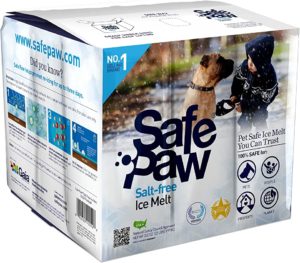
Pet Friendly Ice Melt – Safe Paw!
The Original and the #1 Child and Pet Safe Ice Melt for over 20 years. Guaranteed environmentally safe – will not harm waterways and sensitive wetlands.
By understanding the needs of your specific surface and choosing products wisely, you can keep your brick driveways and walkways ice-free and undamaged through the winter months. Always prioritize products that align with the safety of your environment, pets, and the longevity of your masonry structures.
Pet Safe Ice Melt – Safe Paw
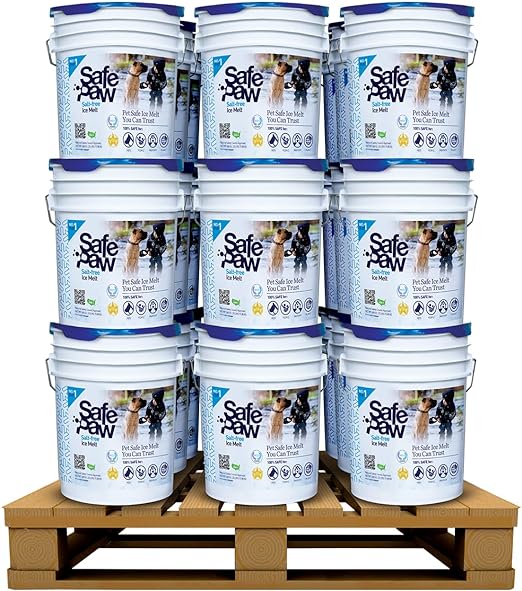
Safe Paw, Child Plant Dog Paw & Pet Safe Ice Melt -35lb, 36 Pails

Safe Paw, Child Plant Dog Paw & Pet Safe Ice Melt -22lb, 100Bboxes
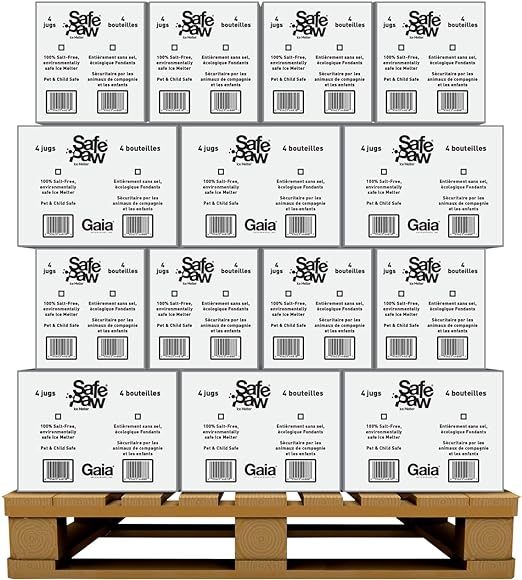
Safe Paw, Child Plant Dog Paw Pet Safe Ice Melt, 160 Jugs
Pet Products Powered By EzPz.pet
So, Is There Any Safe Ice Melt That You Can Use On Bricks?
Yes, there are. There are non-chloride, available in the market that are non-toxic, pet-friendly, and non-corrosive. These are safe to use on bricks and are the best ice melt for the driveway as they act as pre-treatment also. Few ice melts can prevent ice from sticking to surfaces for up to three days, making it easy to clear the snow later.
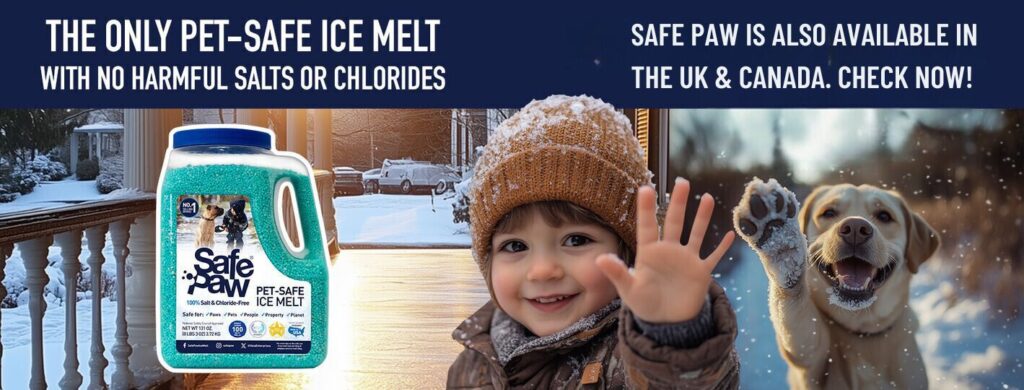
Since these ice melts are chloride-free and salt-free, they do not cause efflorescence or leave crystal deposits. They are also safe for plants & vegetation and pets.
Gaia Enterprises Inc. delivers 100% pet-safe and environmentally friendly winter products. Safe Paw, our flagship product, is the #1 selling pet-safe ice melt that does not harm pets, safe if ingested, and safe on all types of concrete.
Often our walkways, patios, and even driveways are made of bricks. Choosing the best ice melt for a driveway can help you extend its lifespan. So, look for an ice melt that will keep melted ice in a liquid state for a longer duration. It means that ice melt will not refreeze as easily or as often, thus preventing the freeze-thaw cycle.
How should homeowners choose products and read labels?
When evaluating products:
- Read ingredient lists for chloride or salt terms. Avoid any product naming sodium, calcium, magnesium, or potassium chloride.
- Prefer explicit labels stating salt-free, chloride-free, non-corrosive, and pet-safe.
- Check the rated melt temperature; a –2°F rating covers most severe winter conditions without resorting to chlorides.
| Consumer protection guidance recommends checking ingredient panels and melt-temperature ratings to match product to application and climate. |
What Is a Snow Bunny Slang and What Temp Does Salt Not Melt Ice?
While we’re focused on preserving pavers, let’s address a trending curiosity—what is a snow bunny slang? In pop culture, “snow bunny” often refers to someone who enjoys winter sports and loves spending time on the slopes, typically in fashionable ski gear. But in icy climates like yours, a snow bunny might just be that savvy homeowner who’s mastered winter prep—armed with the right tools, a proper car defroster, and an ice melt that protects surfaces rather than destroying them. You, perhaps?
As for salt—most people assume it’s a universal fix for all ice. But what temp does salt not melt ice? Regular rock salt (sodium chloride) stops working effectively below 15°F. That means if temperatures plunge further, you’re basically scattering tiny white pebbles over your driveway for no good reason. It won’t melt the ice—it’ll just sit there, possibly damaging your bricks as the freeze-thaw cycle intensifies. Even calcium chloride, a stronger alternative, starts struggling when temps go subzero and tends to wreak havoc on paver joints and surrounding soil.
Safe Paw sidesteps these limits entirely. With a patented formula that doesn’t rely on salt, it maintains traction and melting power well below salt’s limit. It also forms a protective barrier to prevent re-icing, so you’re not out there sprinkling every two hours or wondering why the snow hasn’t budged. If you’re looking to be your neighborhood’s go-to “snow bunny,” skip the rock salt and go straight for the smart solution.
Car Defroster Tips and Finding Sidewalk Salt Near Me (Without the Damage)
Your vehicle and walkway both deserve winter-safe treatment. While many people scramble to find sidewalk salt near me during the first freeze, the smarter move is choosing an ice melt that works before the panic buying begins. Most common “sidewalk salts” contain either sodium or magnesium chloride—both harmful to pets and destructive to paver surfaces over time.
When deicing brick surfaces or walkways near your car, keep in mind that the runoff often affects your vehicle too. Chloride-based products can increase rusting on undercarriages, especially when slush splashes up while you drive. Combine that with improperly functioning car defrosters, and you’ve got a recipe for windshield frustration and roadside hazards.
Instead, think ahead: apply a chloride-free solution like Safe Paw not just on pavers but also near entryways and garage thresholds. This minimizes salt tracking and corrosion risk while giving your car defroster an easier time clearing windows. Safe Paw’s non-corrosive formula ensures you won’t be cleaning chemical residue off your driveway—or your car—for weeks.
It’s also worth noting that Safe Paw is easy to store and apply even before snowfall begins. Unlike traditional sidewalk salt, which often cakes up or clumps, Safe Paw maintains its texture and effectiveness in storage. When winter storms hit, you’re ready—not searching “sidewalk salt near me” while shelves sit empty.
Conclusion:
Selecting the right ice melt for your pavers involves more than just immediate ice removal. It’s about ensuring the durability and visual appeal of your outdoor spaces. By embracing paver-safe options like Safe Paw, you prioritize the safety and lifespan of your pavers. With a commitment to paver protection, you can confidently face winter’s icy challenges, knowing that your pavers are shielded by an ice melt that cares.
FAQs
Other Ice Melt Products
Traction Magic
Stay safe on slippery surfaces with a product that’s 100% natural and safe for pets, people, and your property. Use Traction Magic on sidewalks, steps, or as instant traction for your car.
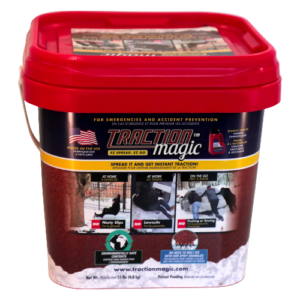
Safe Thaw
Imagine an ice melt you can put down and never worry about. It won’t harm pets, kids and your property. That’s Safe Thaw. Unlike anything else on the market, Safe Thaw can change how winter affects our planet.
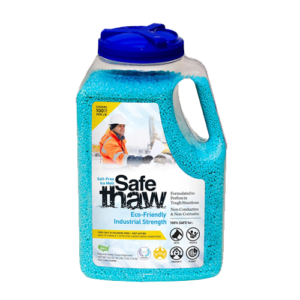
Walk On Ice
Prevent slips at home, work or on the go, The handy disposable canister can be taken everywhere, with the same 100% naturally occurring minerals that provide instant traction on ice or snow.
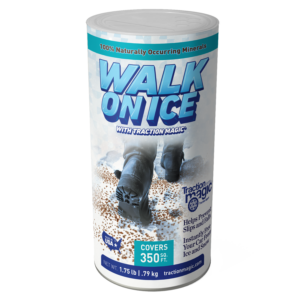
Safe Thaw
Imagine an ice melt you can put down and never worry about. It won’t harm pets, kids and your property. That’s Safe Thaw. Unlike anything else on the market, Safe Thaw can change how winter affects our planet.

